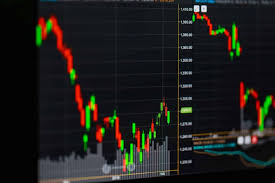
Forex Trading for Beginners: A Comprehensive Guide
Forex trading, or foreign exchange trading, involves the buying and selling of currencies in an attempt to profit from fluctuations in exchange rates. As a beginner, you may find the world of forex daunting, but understanding the basics can pave the way for successful trading. In this article, we will explore key concepts, tips, and strategies that every novice trader should know. For additional resources, visit forex trading beginners https://trading-bd.com/.
What is Forex Trading?
The forex market is the largest and most liquid financial market in the world, with an average daily trading volume of over $6 trillion. Unlike stock markets, forex operates 24 hours a day, five days a week, allowing traders to buy or sell various currency pairs at any time.
Understanding Currency Pairs
In forex trading, currencies are traded in pairs, such as EUR/USD (Euro/US Dollar) or GBP/JPY (British Pound/Japanese Yen). The first currency in a pair is known as the base currency, and the second is the quote currency. The exchange rate indicates how much of the quote currency is required to purchase one unit of the base currency.
Major Currency Pairs vs. Minor and Exotic Pairs
Currency pairs can be categorized into three main groups:
- Major Currency Pairs: These involve the most widely traded currencies, such as USD, EUR, JPY, GBP, AUD, CAD, and CHF. Examples include EUR/USD and USD/JPY.
- Minor Currency Pairs: These pairs do not involve the US dollar. Examples include EUR/GBP and AUD/CHF.
- Exotic Currency Pairs: These pairs consist of one major currency and a currency from an emerging economy, such as USD/TRY (U.S. Dollar/Turkish Lira).
Getting Started with Forex Trading
1. Choose the Right Forex Broker
Before you start trading, it’s crucial to choose a reputable forex broker. Look for a broker that is regulated, offers a user-friendly trading platform, and provides access to a wide range of currency pairs.
2. Open a Trading Account
Once you have selected a broker, you will need to open a trading account. Most brokers offer different types of accounts, such as demo accounts for practice and real accounts for live trading. Starting with a demo account is advisable to familiarize yourself with the trading platform without risking real money.
3. Learn the Basics of Technical and Fundamental Analysis
Understanding how to analyze price movements and economic indicators is crucial for successful trading.
Technical Analysis
This involves analyzing historical price data to identify trends and patterns. Traders use charting tools and indicators, such as moving averages and Relative Strength Index (RSI), to make informed decisions.
Fundamental Analysis
This focuses on economic indicators, news events, and geopolitical developments that can influence currency values. For instance, economic reports like GDP, unemployment rates, and interest rates can impact trader sentiment and thus exchange rates.
Developing a Trading Strategy
A well-defined trading strategy is essential for achieving long-term success in forex trading. Here are some common types of trading strategies:

Scalping
This strategy involves making multiple trades throughout the day to capture small price movements. Scalpers often hold positions for a few seconds to a few minutes.
Day Trading
Day traders open and close positions within the same trading day, aiming to capitalize on short-term market fluctuations. They typically use intraday charts and focus on technical analysis.
Swing Trading
Swing traders hold positions for several days or weeks, looking to profit from expected price movements. This approach often requires a mix of technical and fundamental analysis.
Position Trading
This is a long-term strategy where traders hold positions for months or even years, based on fundamental analysis and overall trends in the market.
Risk Management in Forex Trading
Effective risk management is one of the most critical elements of successful trading. Here are some tips to help you manage your risk:
- Set a Budget: Determine how much money you are willing to risk on each trade (often suggested to be no more than 1-2% of your trading account).
- Use Stop Loss Orders: Implement stop loss orders to limit potential losses on each trade.
- Don’t Overleverage: While leverage can amplify profits, it can also magnify losses. Use leverage cautiously and understand how it works.
Emotional Discipline: The Key to Success
One of the biggest challenges in forex trading is managing emotions. Fear and greed can lead to impulsive decisions, resulting in losses. To maintain emotional discipline, consider the following strategies:
- Stay disciplined and stick to your trading plan.
- Avoid chasing losses; accept that losing is part of trading.
- Keep a trading journal to analyze your performance and improve your strategy over time.
Continuous Learning and Improvement
The forex market is constantly evolving, and traders must stay informed about new strategies, tools, and market developments. Here are some ways to continue your education:
- Read books and articles about forex trading.
- Participate in online trading courses and webinars.
- Join trading communities and forums to share insights and learn from others.
Conclusion
Forex trading for beginners may seem overwhelming at first, but with the right knowledge, tools, and strategies, you can navigate the market successfully. Start by understanding the basics, choosing a reliable broker, developing a trading strategy, and practicing disciplined risk management. Remember, consistent learning and emotional control are key factors in becoming a successful forex trader.
For more resources and information on forex trading, be sure to check out https://trading-bd.com/.











